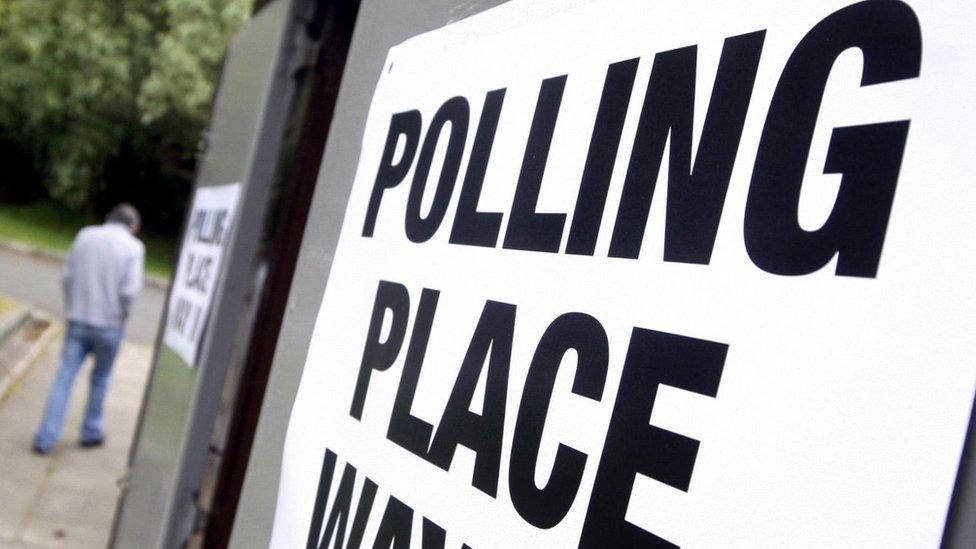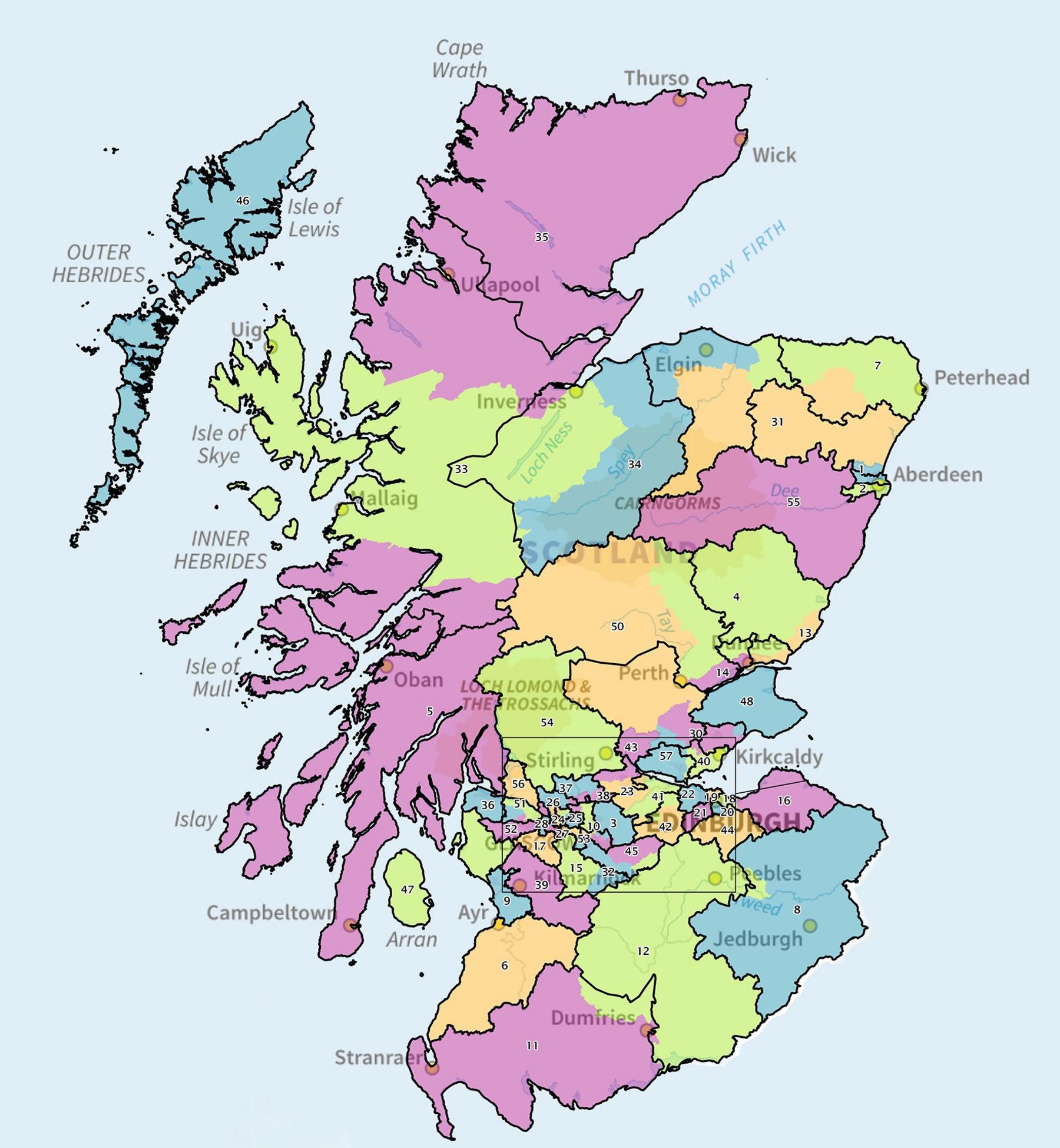Plan for changes to electoral map as Scotland loses two MPs
- Published
- comments

A consultation has opened on a "significant" redrawing of Scotland's electoral map, with widespread changes to Westminster constituencies.
Population changes mean Scotland is due to lose two MPs as part of the review, while England will gain ten.
Major alterations are to be made to boundaries across the country to ensure seats are roughly equal.
A series of consultations and public hearings will be held, and the plans will need to be confirmed by MPs.
More sweeping changes which would have seen the House of Commons reduced from 650 seats to 600 were considered in 2017, but were ultimately scrapped.
By law, the electoral map needs to be reviewed on a regular basis to keep it up to date with demographic changes - for example, so that fast-growing urban areas have enough representatives, and so that MPs all represent a similar number of voters.
The current set of Westminster boundaries have been in place since 2005, when Scotland dropped from 72 constituencies down to 59.
The review is carried out by independent boundary commissioners in each part of the country according to a strict set of rules based on how big each seat should be in terms of population and geographical size.
Aside from island constituencies like Orkney and Shetland, which are protected, each seat should comprise between 69,724 and 77,062 voters.
Only 18 of Scotland's current constituencies fit this quota, and only nine will be untouched by the review.

Constituencies in mainland Scotland would see major alterations to electoral map boundaries
It was announced in January that the quota for constituency size meant Scotland would have two fewer MPs than under previous boundaries. England would gain ten, while Wales would lose eight.
The proposals from the Boundary Commission for Scotland underline how this could work in practice, with one seat taken from the Glasgow area and another from the area covering Aberdeenshire, Moray and the Highlands.
These are not the only changes planned, however, with "significant" alterations needed to adhere to the strict limits on the number of electors in each area and ensure fairness at the ballot box.
Prof Ailsa Henderson - one of the boundary commissioners - pointed out that Caithness, Sutherland and Easter Ross currently has almost 47,000 voters - while Linlithgow and East Falkirk has 88,000.
She said this meant that "votes in small constituencies can be worth the equivalent of two votes in the larger constituency", adding: "If everyone is selecting representatives to the same legislature, but their votes are worth more based purely on where they live, then that is obviously a problem."


Redrawing the electoral map is a gloriously complicated business.
The boundary commissioners have to sketch out new constituency lines across an incredibly nuanced framework of geographical features, population centres, council wards and historical communities.
And, as the eight-week consultation will underline, they also have to think about people.
Past reviews have elicited a vast range of responses, from fury to incomprehension. People invest part of their personal identity into where they're from and indeed where they're not from, and are often suspicious of change.
For example, the ultimately binned 2017 review attracted a deluge of comments from people in Perthshire and Fife who really didn't like the idea of sharing a constituency - one of whom threatened to leave the country, external altogether if the changes went through.
There will also be the usual predictable political posturing from parties seeking to paint the non-partisan exercise as some kind of gerrymandering.
But at the end of the day, times change and populations are not static. At times the commissioners might have a difficult and seemingly thankless task on their hands - but they argue it is a necessary one to ensure our elections are fair.

The commission is carrying out an eight-week consultation on the proposals, before a series of public hearings are held in early 2022.
The plans will be refined ahead of a further consultation later that year, with recommendations to be submitted to parliament by July 2023.
The next Westminster election is expected the following year, although that could still change.
The Boundary Commissions for England and Wales have already begun initial consultations, while another will get underway in Northern Ireland later this year.
Lord Matthews - a senior judge and deputy chairman of the Boundary Commission for Scotland - said: "I believe this is a promising start to delivering the requirements of the new rules that mean the number of constituencies in Scotland will reduce from 59 to 57, and that each mainland constituency must have broadly the same number of electors.
"Today is the beginning of a process, and we now want to hear the views of the public. We strongly encourage voters to make their views heard."